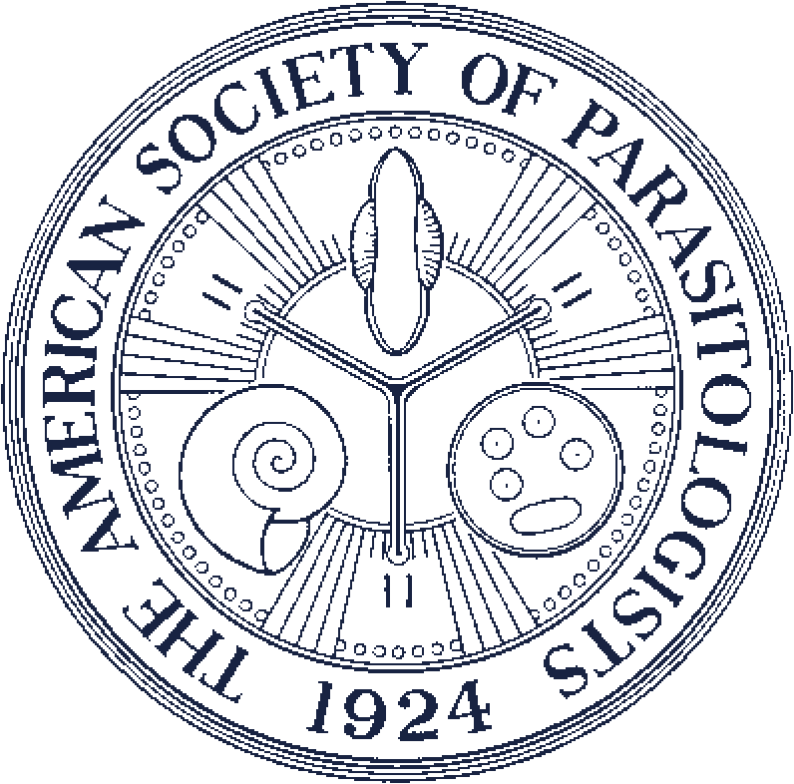Development of Early Tissue Cysts and Associated Pathology of Besnoitia besnoiti in a Naturally Infected Bull (Bos taurus) from South Africa
Besnoitia besnoiti is an apicomplexan that causes serious economic loss in cattle in many countries and the disease is now spreading in Europe. At least 2 phases of bovine besnoitiosis are recognized clinically. An acute febrile phase characterized by anasarca and necrosis of skin is associated with multiplication of tachyzoites in vascular endothelium; this phase is short-lived and rarely diagnosed. Chronic besnoitiosis characterized by dermal lesions is associated with the presence of macroscopic tissue cysts and is easily diagnosed. Here we report the development of early B. besnoiti tissue cysts in a naturally infected Hugenoot bull from South Africa. Tissue cysts were 10–70 μm in diameter, contained 1–12 bradyzoites, and were most numerous in the dermis, testicles, and pampiniform venous plexus. Amylopectin granules in bradyzoites stained red with periodic acid Schiff (PAS) reaction. Bradyzoites varied in size and in the intensity of PAS reaction (some were PAS-negative), some were plump, and others were slender. With immunohistochemical staining with Besnoitia oryctofelisi and bradyzoite-specific antibodies (BAG-1 made against Toxoplasma gondii bradyzoites), the staining was confined to parasites, and all intracystic organisms were BAG-1 positive. With Gomori's silver stain only bradyzoites were stained very faintly whereas the rest of the tissue cyst was unstained. Ultrastructurally many tissue cysts contained dead bradyzoites and some appeared empty. Unlike bradyzoites from mature cysts, bradyzoites in the present case contained few or no micronemes. These findings are of diagnostic significance. Ultrastructually host cyst cells had features of myofibroblasts, and immunohistochemistry using antibodies against MAC387, lysozyme, vimentin, Von Willebrand factor, and smooth muscle actin confirmed this. Polymerase chain reaction on DNA extracted from lymph node of the bull confirmed B. besnoiti diagnosis. Associated clinical findings, lesions, and histopathology are briefly presented. The bull died of nephrotic syndrome; anasarca in acute besnoitiosis due to protein-losing glomerulopathy is a finding not previously reported in cattle.Abstract:

Ventral view of the bull suffering from besnoitiosis. Note skin and scrotal lesions.

Histological sections of skin. (A) Scrotal skin transition from more normal to area of epidermal and dermal necrosis. (B) Deep subcutaneous vessels containing thromboses. H&E.

Besnoitia tissue cysts in scrotal subcutaneous tissue. (A) Immunoperoxidase staining with antibody against smooth muscle actin. Note several tissue cysts in perivascular connective tissue and a sub-endothelial cyst with peripheral cytoplasmic smooth muscle actin staining (arrow). (B) Inset showing TEM of host cell cytoplasm with peripheral myofilaments (arrows). Note dilated endoplasmic reticulum (asterisk).

Development of Besnoitia besnoiti tissue cysts in histological sections of tissues of a naturally infected bull from South Africa. (A–D) and (H) stained with periodic acid Schiff (PAS) reaction counter-stained with hematoxylin, (E) IMH staining with Besnoitia oryctofelisi polyclonal rabbit antibody, (F,G) IMH staining with bradyzoite-specific BAG-1 antibody. (A) Two PAS-negative zoites in separate vacuoles (arrows). Note 2 host cell nuclei (hcn) and the homogenous outer layer (bar code). (B) One bradyzoite in a vacuole (arrow). Note intense PAS reaction at the narrow end of the zoite. (C) Two different-sized bradyzoites (arrows) with varying PAS reactivity. (D) Four bradyzoites in a vacuole, 2 of which are cut longitudinally (arrows). (E) Three zoites (arrows) intensely stained with B. oryctofelisi antibody. Note absence of staining of the vacuole and host cell elements. The zoites swell up after staining with Besnoitia antibody. (F) One bradyzoite (arrow) in a large tissue cyst. (G) One extracellular (a) and 3 groups of intracystic bradyzoites (b–d). Note 3 bradyzoites (arrows) in (b), apparently in different vacuoles. Groups of bradyzoites in (c) and (d) are located in separate vacuoles. (H) Numerous tissue cysts around a blood vessel in pampiniform plexus.

TEM of early tissue cysts of B. besnoiti. Note 1–7 bradyzoites enclosed in a thin parasitophorous vacuolar membrane (arrows). The outer layer (layer 1) consists of connective tissue. The middle layer (layer 2) is electron dense and contains multiple host cell nuclei (hcn). Layer 3 encloses bradyzoites. (A) Tissue cyst with 1 bradyzoite. (B) Tissue cyst with 2 bradyzoites that appear to be degenerated. (C) Tissue cyst with 3 bradyzoites. (D) Tissue cyst with 7 bradyzoites.

TEM of B. besnoiti bradyzoites. Two longitudinally cut bradyzoites (A, B) with varying position and contents of amylopectin (Am), nucleus (nu), lipid body (Lb), and mitochondria (Mt). Note conoid (Co) with thickening of the pellicle at the conoidal end (arrow heads) and rhoptries (Ro).

TEM of B. besnoiti bradyzoites. Higher magnification of conoidal ends of 3 bradyzoites. (A) Note conoid (Co), rhoptries (Ro) with the bulbous blind end towards the conoid, rare amylopectin (Am), few micronemes (Mn), and part of mitochondria (Mc). The pellicle is thickened towards the conoid (opposing arrowheads). (B) Conoidal end of a bradyzoite with subpellicular microtubules (Mt) and a rhoptry (Ro) with its blind end towards the conoid.
Contributor Notes
